Engineering Innovation for Communities
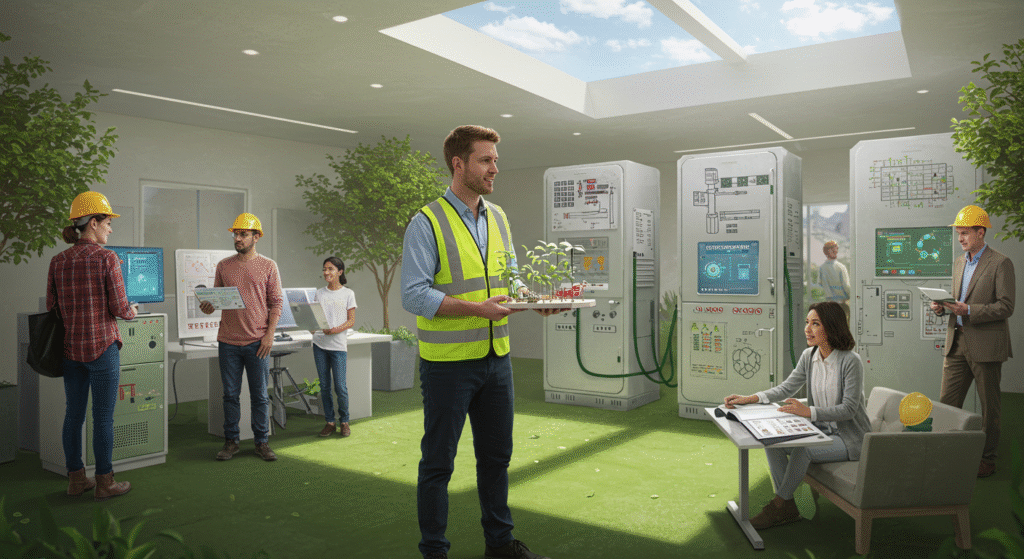
Engineering Innovation for Communities
Table of Contents
- Introduction to Engineering Innovation for Communities
- 1.1. Defining Engineering Innovation
- 1.2. The Role of Engineering in Community Development
- 1.3. Historical Context of Engineering for Communities
- Sustainable Development and Engineering
- 2.1. Sustainable Engineering Practices
- 2.2. Renewable Energy Solutions
- 2.3. Green Technologies and Eco-Friendly Materials
- Smart Cities and Urban Innovation
- 3.1. The Concept of Smart Cities
- 3.2. IoT and Data Analytics in Urban Planning
- 3.3. Intelligent Transportation Systems
- Community-Specific Engineering Solutions
- 4.1. Rural Development and Agricultural Engineering
- 4.2. Urban Renewal and Infrastructure Development
- 4.3. Disaster-Resilient Construction
- Case Studies of Successful Community Projects
- 5.1. The High Line: Revitalizing Urban Spaces
- 5.2. Singapore Smart City Initiative
- 5.3. Renewable Energy in Remote Villages
- Challenges in Engineering for Communities
- 6.1. Funding and Resource Limitations
- 6.2. Regulatory and Bureaucratic Hurdles
- 6.3. Community Engagement and Participation
- Overcoming Challenges: Strategies and Solutions
- 7.1. Public-Private Partnerships (PPPs)
- 7.2. Grassroots Initiatives and Crowdfunding
- 7.3. Policy Advocacy and Reform
- The Role of Education and Training
- 8.1. Capacity Building for Engineers
- 8.2. Community Education and Awareness
- 8.3. Collaborative Research and Development
- Emerging Technologies and Future Trends
- 9.1. Artificial Intelligence in Community Engineering
- 9.2. Blockchain for Transparent Project Management
- 9.3. Biotechnology and Environmental Solutions
- Global Collaboration and Knowledge Sharing
- 10.1. International Partnerships and Networks
- 10.2. Cross-Cultural Exchange of Ideas
- 10.3. Global Standards and Best Practices
- Conclusion
- 11.1. Summary of Key Points
- 11.2. The Impact of Engineering Innovation on Communities
- 11.3. Encouragement for Future Innovators
1. Introduction to Engineering Innovation for Communities
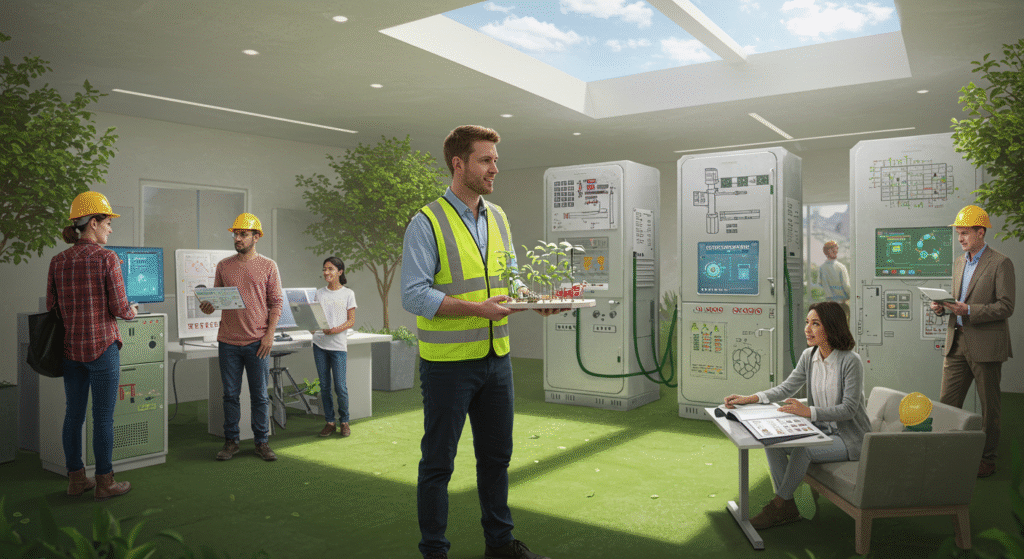
1.1. Defining Engineering Innovation
Engineering innovation refers to the development and implementation of novel solutions to real-world problems. In the context of communities, it involves creating technologies, processes, and systems that enhance the quality of life, improve efficiency, and promote sustainability.
1.2. The Role of Engineering in Community Development
Engineers play a pivotal role in community development by designing and implementing infrastructure, services, and technologies that address specific needs. Whether it’s providing clean water, improving transportation, or enhancing public safety, engineering innovations are essential for building and maintaining thriving communities.
1.3. Historical Context of Engineering for Communities
From ancient aqueducts to modern smart cities, engineering has always been a driving force behind community development. Historical examples, such as the construction of the Roman Colosseum and the development of the London sewer system, illustrate the enduring impact of engineering on societal progress.
2. Sustainable Development and Engineering
2.1. Sustainable Engineering Practices
Sustainable engineering focuses on creating solutions that minimize environmental impact while meeting the needs of the present without compromising the ability of future generations to meet their own needs. This approach is critical for developing resilient and eco-friendly communities.
2.2. Renewable Energy Solutions
Renewable energy sources, such as solar, wind, and hydropower, are essential for reducing reliance on fossil fuels and mitigating climate change. Engineers are at the forefront of developing and implementing renewable energy technologies that can power communities sustainably.
2.3. Green Technologies and Eco-Friendly Materials
The use of green technologies and eco-friendly materials is a cornerstone of sustainable engineering. From energy-efficient buildings to biodegradable construction materials, these innovations help reduce the environmental footprint of community development projects.
3. Smart Cities and Urban Innovation
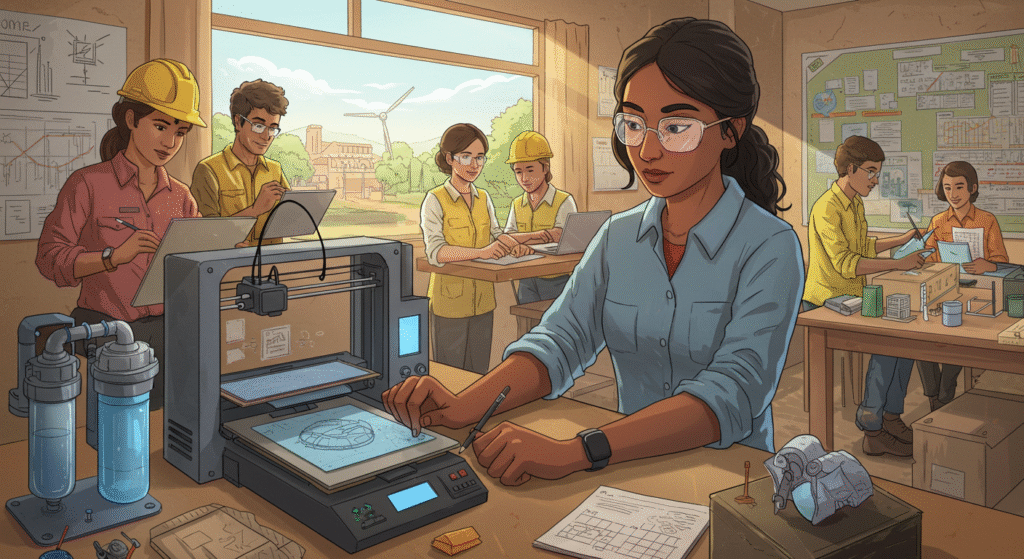
3.1. The Concept of Smart Cities
Smart cities leverage technology and data to improve the quality of life for residents. By integrating IoT devices, smart grids, and data analytics, cities can optimize resource use, enhance public services, and create more livable environments.
3.2. IoT and Data Analytics in Urban Planning
The Internet of Things (IoT) and data analytics are powerful tools for urban planning. These technologies enable real-time monitoring of city operations, allowing for data-driven decision-making and more efficient management of resources.
3.3. Intelligent Transportation Systems
Intelligent transportation systems (ITS) use advanced technologies to improve traffic flow, reduce congestion, and enhance public transit. Examples include smart traffic lights, real-time public transit tracking, and autonomous vehicles.
4. Community-Specific Engineering Solutions
4.1. Rural Development and Agricultural Engineering
Rural communities face unique challenges, such as limited access to resources and infrastructure. Agricultural engineering plays a crucial role in addressing these challenges by developing technologies and systems that improve farming efficiency, water management, and food security.
4.2. Urban Renewal and Infrastructure Development
Urban renewal projects focus on revitalizing underdeveloped areas to improve the quality of life for residents. This includes the development of affordable housing, green spaces, and community facilities, as well as the upgrading of infrastructure to support economic growth.
4.3. Disaster-Resilient Construction
Disaster-resilient construction involves designing and building structures that can withstand natural disasters, such as earthquakes, hurricanes, and floods. Engineers use advanced materials and techniques to create safe and durable buildings that protect communities from harm.
5. Case Studies of Successful Community Projects
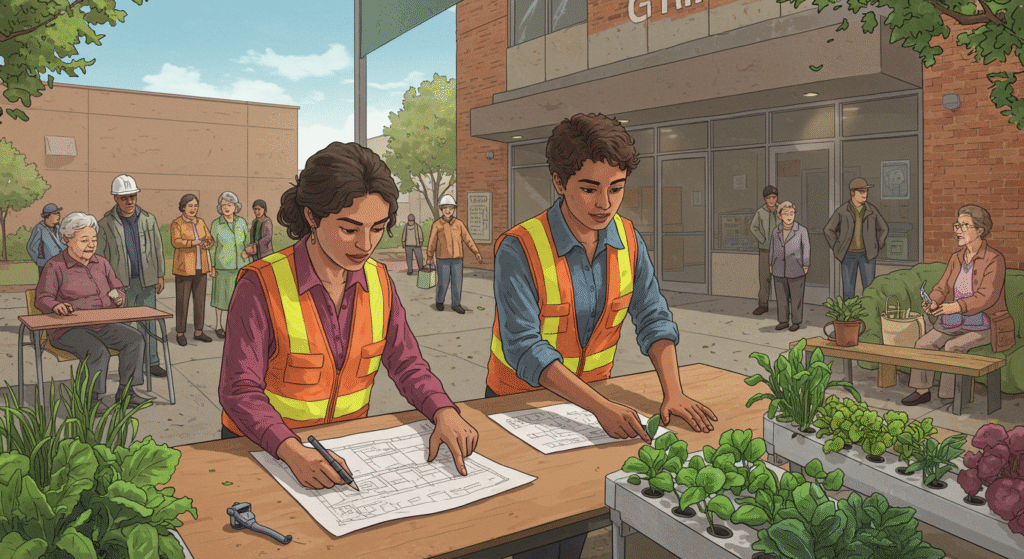
5.1. The High Line: Revitalizing Urban Spaces
The High Line in New York City is a prime example of urban renewal. This elevated park, built on an old rail line, has transformed a neglected industrial area into a vibrant public space, boosting local businesses and enhancing community life.
5.2. Singapore Smart City Initiative
Singapore’s Smart City initiative is a model of urban innovation. The city-state has integrated technology into every aspect of urban planning, from transportation and energy to healthcare and education, creating a highly efficient and livable city.
5.3. Renewable Energy in Remote Villages
In many remote villages, engineers have implemented renewable energy projects, such as solar and wind power, to provide reliable electricity. These projects have transformed communities by powering homes, schools, and healthcare facilities, improving overall quality of life.
6. Challenges in Engineering for Communities
6.1. Funding and Resource Limitations
One of the significant challenges in engineering for communities is securing adequate funding. Many projects require substantial investment, which can be difficult to obtain, especially in developing regions.
6.2. Regulatory and Bureaucratic Hurdles
Navigating complex regulatory environments and bureaucratic processes can delay or even derail community engineering projects. Engineers must often work closely with government agencies and stakeholders to overcome these obstacles.
6.3. Community Engagement and Participation
Engaging the community and ensuring their participation is crucial for the success of engineering projects. Miscommunication or lack of involvement can lead to resistance or dissatisfaction with the final outcome.
7. Overcoming Challenges: Strategies and Solutions
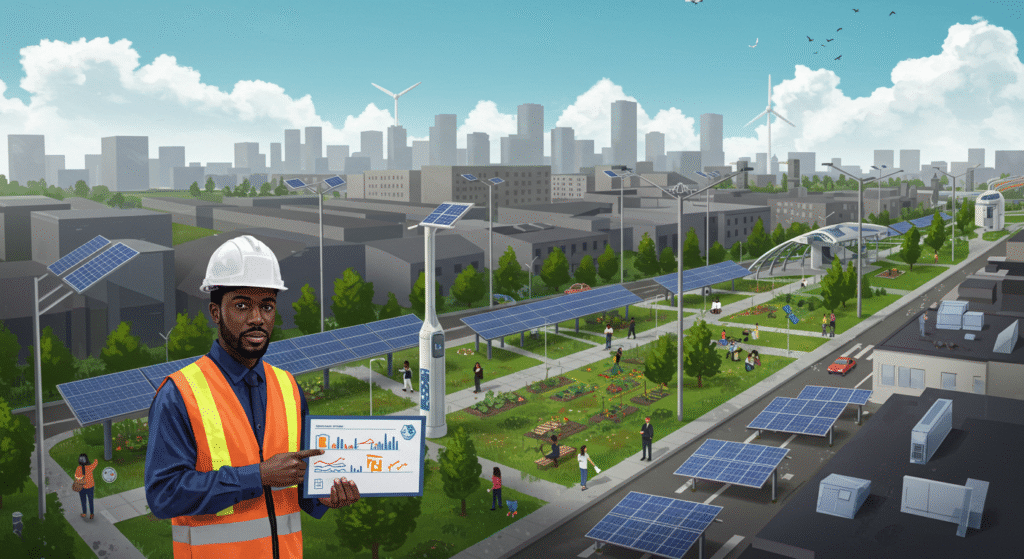
7.1. Public-Private Partnerships (PPPs)
Public-Private Partnerships (PPPs) offer a viable solution for funding and managing community engineering projects. By leveraging private-sector expertise and resources, governments can deliver large-scale infrastructure projects more efficiently.
7.2. Grassroots Initiatives and Crowdfunding
Grassroots initiatives and crowdfunding platforms provide alternative funding sources for community projects. These approaches empower local residents to take ownership of development initiatives, fostering a sense of community and shared responsibility.
7.3. Policy Advocacy and Reform
Advocating for policy changes and regulatory reforms can help create a more favorable environment for engineering projects. Engineers and community leaders must work together to influence decision-makers and push for policies that support sustainable development.
8. The Role of Education and Training
8.1. Capacity Building for Engineers
Capacity building programs are essential for equipping engineers with the skills and knowledge needed to tackle complex community challenges. These programs focus on sustainable practices, innovative technologies, and project management.
8.2. Community Education and Awareness
Educating the community about the benefits and importance of engineering projects is crucial for gaining support and ensuring successful implementation. Public awareness campaigns and workshops can help bridge the gap between technical experts and local residents.
8.3. Collaborative Research and Development
Collaborative research and development initiatives bring together engineers, researchers, and community members to co-create solutions that address local needs. This participatory approach ensures that projects are culturally appropriate and technically sound.
9. Emerging Technologies and Future Trends

9.1. Artificial Intelligence in Community Engineering
Artificial Intelligence (AI) is revolutionizing community engineering by enabling predictive maintenance, optimizing resource use, and enhancing decision-making. AI-powered tools can analyze data from various sources to identify trends and potential issues before they escalate.
9.2. Blockchain for Transparent Project Management
Blockchain technology offers a secure and transparent way to manage community projects. By providing a decentralized and tamper-proof record of transactions and decisions, blockchain can increase accountability and trust among stakeholders.
9.3. Biotechnology and Environmental Solutions
Biotechnology is playing an increasingly important role in environmental engineering. From bioremediation to bio-based materials, these innovations offer sustainable solutions for waste management, pollution control, and ecosystem restoration.
10. Global Collaboration and Knowledge Sharing
10.1. International Partnerships and Networks
Global partnerships and networks facilitate the exchange of ideas, expertise, and resources. International collaborations have led to the development of best practices and innovative solutions that can be adapted to local contexts.
10.2. Cross-Cultural Exchange of Ideas
Cross-cultural exchange enriches the engineering process by introducing diverse perspectives and approaches. This exchange fosters creativity and innovation, leading to more robust and inclusive community solutions.
10.3. Global Standards and Best Practices
Adhering to global standards and best practices ensures that community engineering projects meet high levels of quality and safety. These standards also promote consistency and comparability across different regions and countries.
11. Conclusion
11.1. Summary of Key Points
Engineering innovation plays a vital role in shaping the future of communities. By developing sustainable solutions, leveraging emerging technologies, and fostering global collaboration, engineers can address complex challenges and create better living conditions for all.
11.2. The Impact of Engineering Innovation on Communities
The impact of engineering innovation on communities is profound. From improving infrastructure to enhancing quality of life, these innovations have the power to transform societies and drive positive change.
11.3. Encouragement for Future Innovators
For those aspiring to make a difference through engineering, the field offers endless opportunities to innovate and create. By embracing creativity, collaboration, and a commitment to sustainability, future engineers can continue to shape communities that are resilient, inclusive, and thriving.
- https://worldcivilsociety.com/construction-project-management/
- https://worldcivilsociety.com/construction-cost-estimation/
- https://worldcivilsociety.com/the-role-of-a-general-contractor/
- https://worldcivilsociety.com/foundation-repair-a-comprehensive-guide/
- https://worldcivilsociety.com/home-builders/
Pingback: Skyscraper Design Engineering: A Comprehensive Overview
Pingback: Soil and Terrain Analysis in Civil Engineering